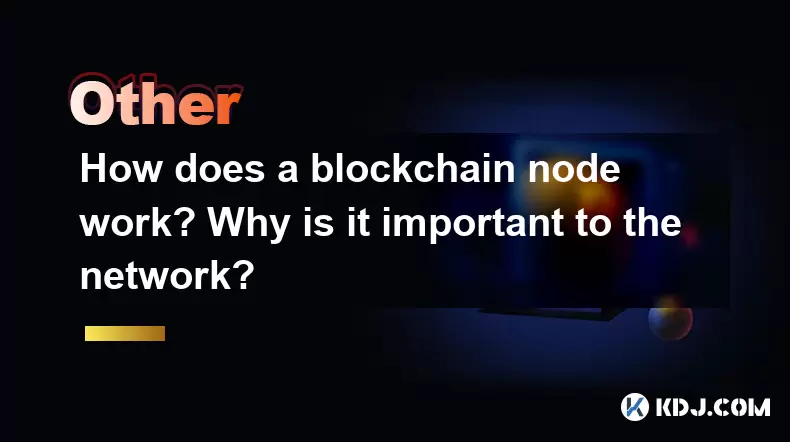-
 Bitcoin
Bitcoin $114800
-3.31% -
 Ethereum
Ethereum $3641
-5.84% -
 XRP
XRP $2.948
-6.36% -
 Tether USDt
Tether USDt $0.9998
-0.03% -
 BNB
BNB $772.4
-3.97% -
 Solana
Solana $169.1
-6.68% -
 USDC
USDC $0.9999
-0.01% -
 Dogecoin
Dogecoin $0.2056
-8.09% -
 TRON
TRON $0.3247
-0.18% -
 Cardano
Cardano $0.7239
-7.43% -
 Hyperliquid
Hyperliquid $39.71
-8.60% -
 Stellar
Stellar $0.3912
-7.84% -
 Sui
Sui $3.510
-10.17% -
 Chainlink
Chainlink $16.59
-8.03% -
 Bitcoin Cash
Bitcoin Cash $560.5
-3.65% -
 Hedera
Hedera $0.2464
-10.08% -
 Avalanche
Avalanche $22.03
-7.87% -
 Ethena USDe
Ethena USDe $1.001
-0.02% -
 UNUS SED LEO
UNUS SED LEO $8.947
0.21% -
 Toncoin
Toncoin $3.389
-2.58% -
 Litecoin
Litecoin $104.9
-5.23% -
 Shiba Inu
Shiba Inu $0.00001220
-6.67% -
 Polkadot
Polkadot $3.652
-6.10% -
 Uniswap
Uniswap $9.213
-9.05% -
 Monero
Monero $307.2
-2.93% -
 Dai
Dai $0.9998
-0.02% -
 Bitget Token
Bitget Token $4.367
-2.89% -
 Cronos
Cronos $0.1374
-6.80% -
 Pepe
Pepe $0.00001056
-8.65% -
 Aave
Aave $257.3
-7.31%
How does a blockchain node work? Why is it important to the network?
Nodes are vital for blockchain integrity, verifying transactions and maintaining the ledger, with full nodes storing complete copies and lightweight nodes relying on them for data.
May 15, 2025 at 10:57 pm

A blockchain node is a crucial component of a decentralized network, serving as the backbone that ensures the integrity and security of the entire system. Nodes are essentially computers that run the blockchain software, participating in the network by maintaining and verifying the transactions that occur within it. Each node stores a complete or partial copy of the blockchain, depending on its type, and works collaboratively with other nodes to validate and relay new blocks of transactions.
Types of Blockchain Nodes
There are several types of nodes in a blockchain network, each with specific functions and capabilities. Full nodes store and maintain a complete copy of the blockchain, validating all transactions and blocks against the network's consensus rules. Lightweight nodes, or light nodes, store only a subset of the blockchain data, relying on full nodes for the complete validation of transactions. Mining nodes, also known as miners, not only validate transactions but also compete to solve complex mathematical problems to add new blocks to the blockchain, earning rewards in the process.
The Role of Nodes in Transaction Verification
Nodes play a vital role in the verification of transactions. When a user initiates a transaction, it is broadcasted to the network where nodes pick it up. Full nodes will check the transaction against the blockchain's rules, ensuring that the sender has the necessary funds and that the transaction adheres to the network's protocol. If the transaction is valid, it is added to a memory pool (mempool) where it waits to be included in a new block. Mining nodes then select transactions from the mempool, group them into a block, and attempt to solve the cryptographic puzzle required to add the block to the blockchain.
How Nodes Maintain the Blockchain
Nodes are responsible for maintaining the integrity of the blockchain by continuously updating their copy of the ledger. When a new block is added to the blockchain, full nodes will verify the block's validity and, if it meets the consensus rules, add it to their local copy of the blockchain. This process ensures that all nodes on the network have a consistent view of the blockchain's state. Lightweight nodes will request the necessary data from full nodes to update their partial copy of the blockchain, ensuring they can still participate in the network without the need for extensive storage and computational resources.
The Importance of Nodes to Network Security
The decentralized nature of blockchain networks relies heavily on the participation of nodes to ensure security. Nodes act as a defense mechanism against malicious activities by validating transactions and blocks. If a malicious actor attempts to alter the blockchain, the majority of honest nodes will reject the invalid data, maintaining the integrity of the network. This consensus mechanism, often referred to as proof of work or proof of stake, depends on the collective effort of nodes to secure the blockchain against attacks such as double-spending or 51% attacks.
How Nodes Facilitate Network Communication
Nodes are essential for the communication within the blockchain network. They relay information about new transactions and blocks to other nodes, ensuring that the entire network stays synchronized. Full nodes act as hubs, connecting to multiple other nodes and facilitating the spread of data across the network. Lightweight nodes connect to full nodes to receive updates, allowing them to participate in the network without the need for extensive resources. This interconnected web of nodes ensures that the blockchain remains a robust and resilient system.
Setting Up a Blockchain Node
Setting up a blockchain node involves several steps, depending on the specific blockchain network you wish to join. Here is a general guide on how to set up a full node for a popular blockchain like Bitcoin:
- Download the Blockchain Software: Visit the official website of the blockchain you want to join (e.g., Bitcoin.org) and download the appropriate software for your operating system.
- Install the Software: Follow the installation instructions provided by the software. This typically involves running an installer or extracting the software to a designated directory.
- Configure the Node: Open the configuration file (often named
bitcoin.conffor Bitcoin) and set the necessary parameters such as the data directory, network ports, and any other settings specific to your setup. - Synchronize the Blockchain: Launch the software and allow it to synchronize with the network. This process can take several days as it downloads and verifies the entire blockchain.
- Connect to the Network: Once synchronized, your node will automatically connect to other nodes on the network. You can verify this by checking the list of connected peers in the software's interface.
Frequently Asked Questions
Q: Can anyone run a blockchain node?
A: Yes, anyone with the necessary hardware and internet connection can run a blockchain node. However, running a full node requires significant storage and bandwidth, so it's important to ensure your system meets the minimum requirements specified by the blockchain network.
Q: What are the benefits of running a blockchain node?
A: Running a blockchain node allows you to independently verify transactions and blocks, contributing to the security and decentralization of the network. Additionally, it can provide you with a higher level of privacy and control over your transactions, as you do not need to rely on third-party services.
Q: How do nodes affect the scalability of a blockchain?
A: Nodes can impact the scalability of a blockchain, as the more nodes there are, the more resources are required to maintain the network. However, a larger number of nodes also increases the security and decentralization of the network. Some blockchains implement solutions like sharding or layer-2 scaling to improve scalability while maintaining a robust node network.
Q: What happens if a node goes offline?
A: If a single node goes offline, it does not significantly impact the overall network, as other nodes continue to operate and maintain the blockchain. However, if a large number of nodes go offline simultaneously, it could potentially disrupt the network's ability to process transactions and add new blocks.
Disclaimer:info@kdj.com
The information provided is not trading advice. kdj.com does not assume any responsibility for any investments made based on the information provided in this article. Cryptocurrencies are highly volatile and it is highly recommended that you invest with caution after thorough research!
If you believe that the content used on this website infringes your copyright, please contact us immediately (info@kdj.com) and we will delete it promptly.
- Bitcoin, Ethereum, and Investor Behavior: A New York Minute on Crypto Trends
- 2025-08-01 15:10:12
- Tether's Q2 Triumph: USDT Supply Soars Amidst Profit Surge!
- 2025-08-01 15:10:12
- Ethereum ETF Holdings: A Corporate Treasury Revolution?
- 2025-08-01 15:30:12
- Ethereum's Wild Ride: Funding Rates, Price Drops, and Retail to the Rescue!
- 2025-08-01 15:30:12
- Ethereum Under Pressure: Crypto Market Drop Explained
- 2025-08-01 15:35:11
- Ethereum ETF Mania: Inflows Surge, Market Rises, What's Next?
- 2025-08-01 15:35:11
Related knowledge

How to start a business using blockchain?
Jul 28,2025 at 12:36am
Understanding the Basics of Blockchain TechnologyBefore diving into the process of starting a business using blockchain, it's crucial to understand wh...

What is a token on the blockchain?
Jul 21,2025 at 07:00am
Understanding the Concept of a TokenIn the realm of blockchain technology, a token is a digital representation of an asset or utility that exists on a...

Can blockchain be used for identity verification?
Jul 18,2025 at 02:14pm
Understanding Identity Verification in the Digital AgeIn the modern digital landscape, identity verification has become a critical component for ensur...

What is a consensus mechanism in blockchain?
Jul 21,2025 at 03:01am
Understanding the Basics of Consensus MechanismsA consensus mechanism is a critical component of any blockchain network. It refers to the process by w...

How to explain blockchain to someone with no tech background?
Jul 18,2025 at 11:08pm
Understanding the Basics of BlockchainTo explain blockchain to someone with no tech background, it's essential to start with simple analogies and avoi...

Who invented blockchain technology?
Jul 23,2025 at 01:28am
Origins of Blockchain TechnologyBlockchain technology did not emerge from a single inventor or institution. Instead, it evolved through a series of ac...

How to start a business using blockchain?
Jul 28,2025 at 12:36am
Understanding the Basics of Blockchain TechnologyBefore diving into the process of starting a business using blockchain, it's crucial to understand wh...

What is a token on the blockchain?
Jul 21,2025 at 07:00am
Understanding the Concept of a TokenIn the realm of blockchain technology, a token is a digital representation of an asset or utility that exists on a...

Can blockchain be used for identity verification?
Jul 18,2025 at 02:14pm
Understanding Identity Verification in the Digital AgeIn the modern digital landscape, identity verification has become a critical component for ensur...

What is a consensus mechanism in blockchain?
Jul 21,2025 at 03:01am
Understanding the Basics of Consensus MechanismsA consensus mechanism is a critical component of any blockchain network. It refers to the process by w...

How to explain blockchain to someone with no tech background?
Jul 18,2025 at 11:08pm
Understanding the Basics of BlockchainTo explain blockchain to someone with no tech background, it's essential to start with simple analogies and avoi...

Who invented blockchain technology?
Jul 23,2025 at 01:28am
Origins of Blockchain TechnologyBlockchain technology did not emerge from a single inventor or institution. Instead, it evolved through a series of ac...
See all articles

























































































